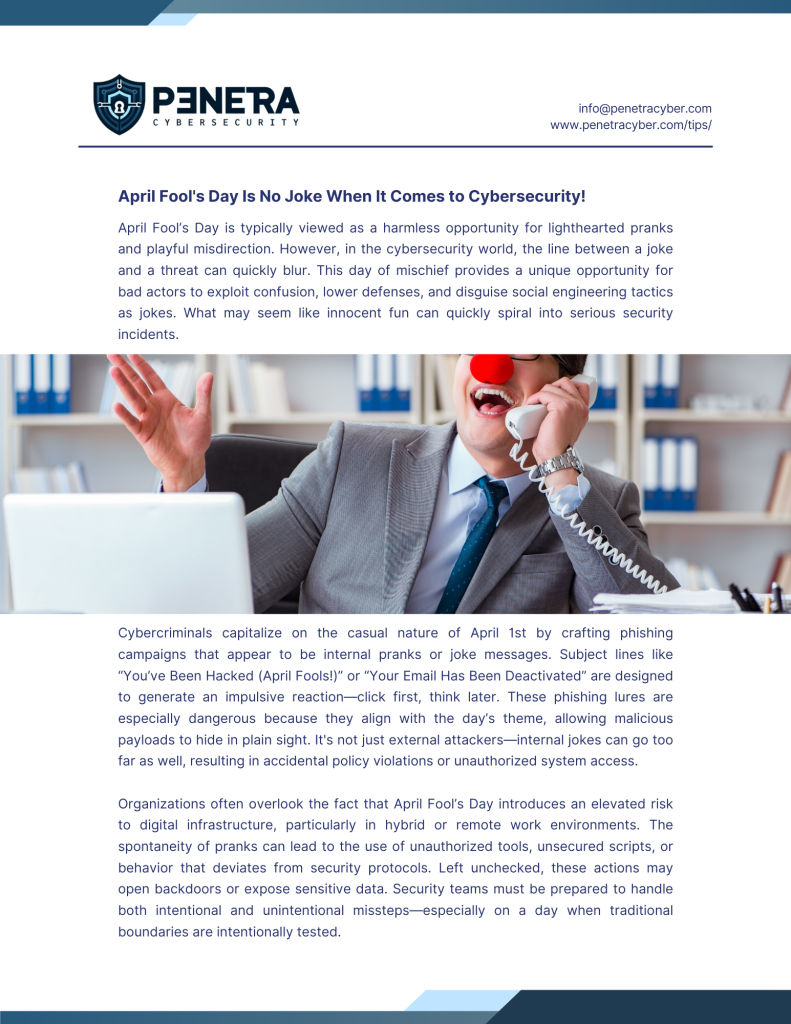April Fool’s Day Is No Joke
When It Comes to Cybersecurity!
April Fool’s Day is typically viewed as a harmless opportunity for lighthearted pranks and playful misdirection. However, in the cybersecurity world, the line between a joke and a threat can quickly blur. This day of mischief provides a unique opportunity for bad actors to exploit confusion, lower defenses, and disguise social engineering tactics as jokes. What may seem like innocent fun can quickly spiral into serious security incidents.
Cybercriminals capitalize on the casual nature of April 1st by crafting phishing campaigns that appear to be internal pranks or joke messages. Subject lines like “You’ve Been Hacked (April Fools!)” or “Your Email Has Been Deactivated” are designed to generate an impulsive reaction—click first, think later. These phishing lures are especially dangerous because they align with the day’s theme, allowing malicious payloads to hide in plain sight. It’s not just external attackers—internal jokes can go too far as well, resulting in accidental policy violations or unauthorized system access.
Organizations often overlook the fact that April Fool’s Day introduces an elevated risk to digital infrastructure, particularly in hybrid or remote work environments. The spontaneity of pranks can lead to the use of unauthorized tools, unsecured scripts, or behavior that deviates from security protocols. Left unchecked, these actions may open backdoors or expose sensitive data. Security teams must be prepared to handle both intentional and unintentional missteps—especially on a day when traditional boundaries are intentionally tested.
To mitigate risk, security leaders should take a proactive stance. Brief employees ahead of time, reminding them that humor is welcome—but should never come at the expense of operational integrity or data security. Establish clear prank boundaries, monitor network behavior for anomalies, and encourage immediate reporting of any suspicious messages—even those that appear to be jokes. Leveraging the day as an opportunity to reinforce phishing awareness and promote incident response best practices can transform April 1st into a valuable training moment.
In the end, cybersecurity is about anticipating human behavior—and April Fool’s Day is a perfect example of how that behavior can be unpredictable. A well-timed prank might get a laugh, but a well-timed exploit could cost much more. This April 1st, keep the fun—but leave no room for compromise.

